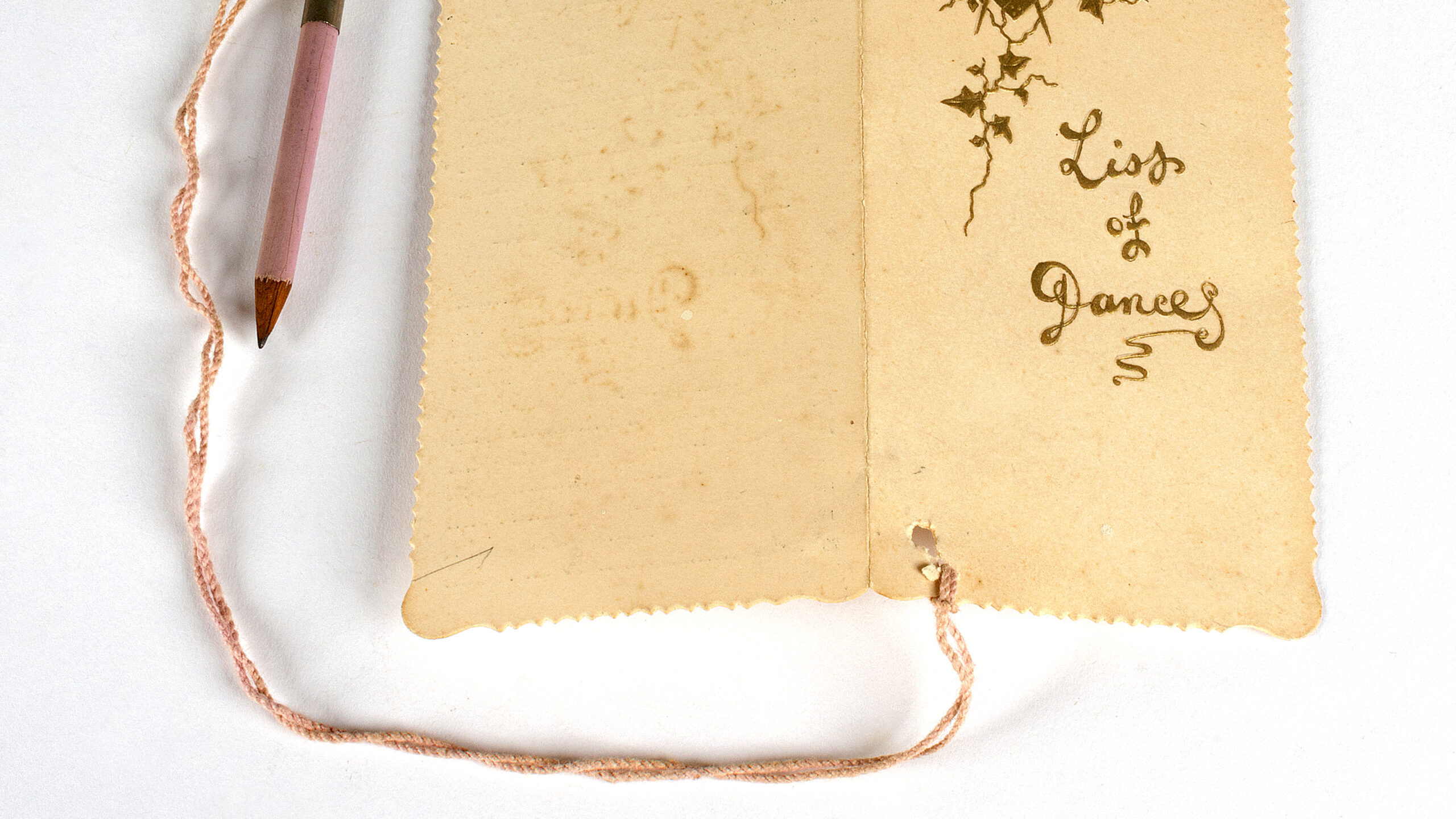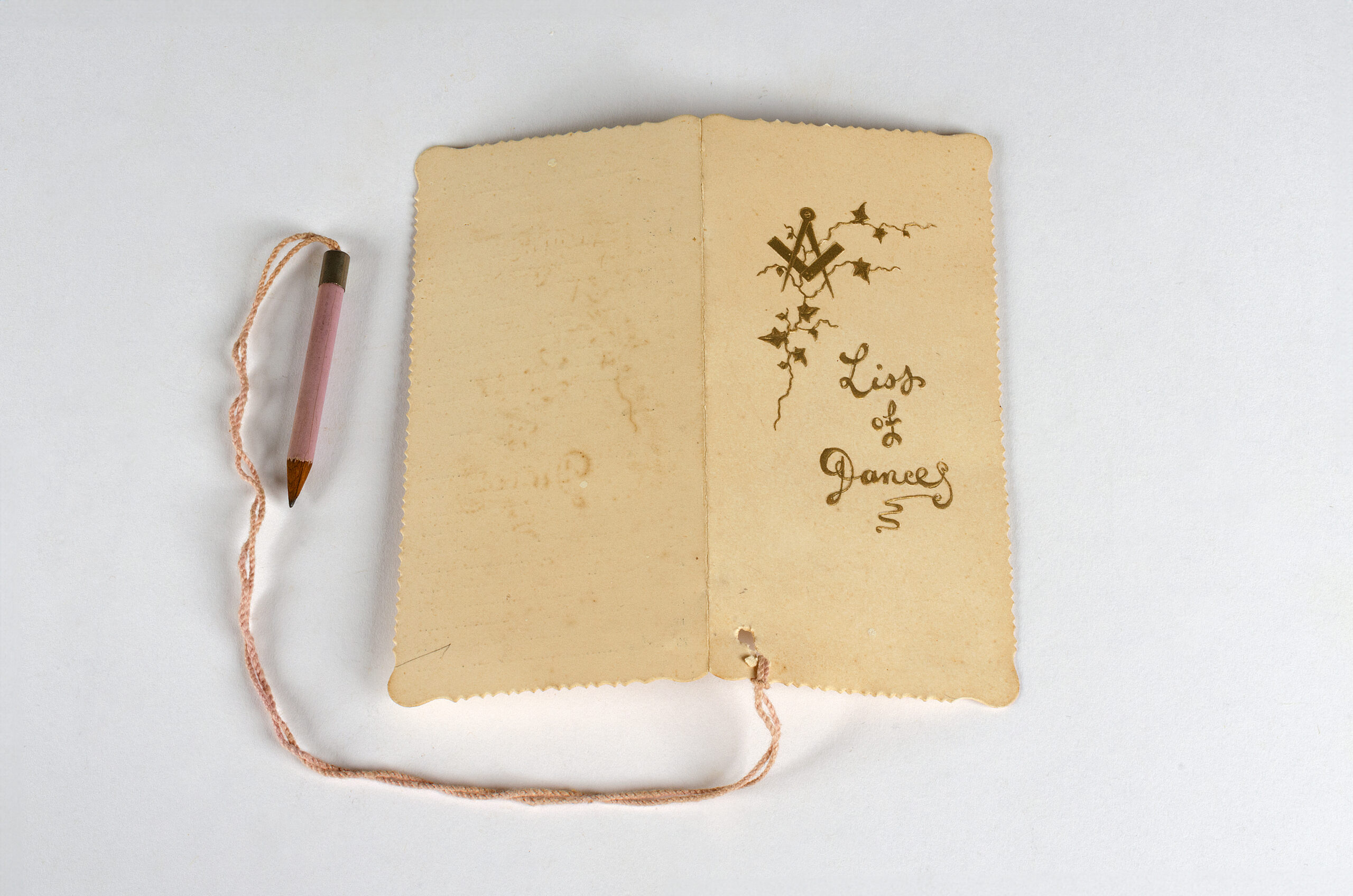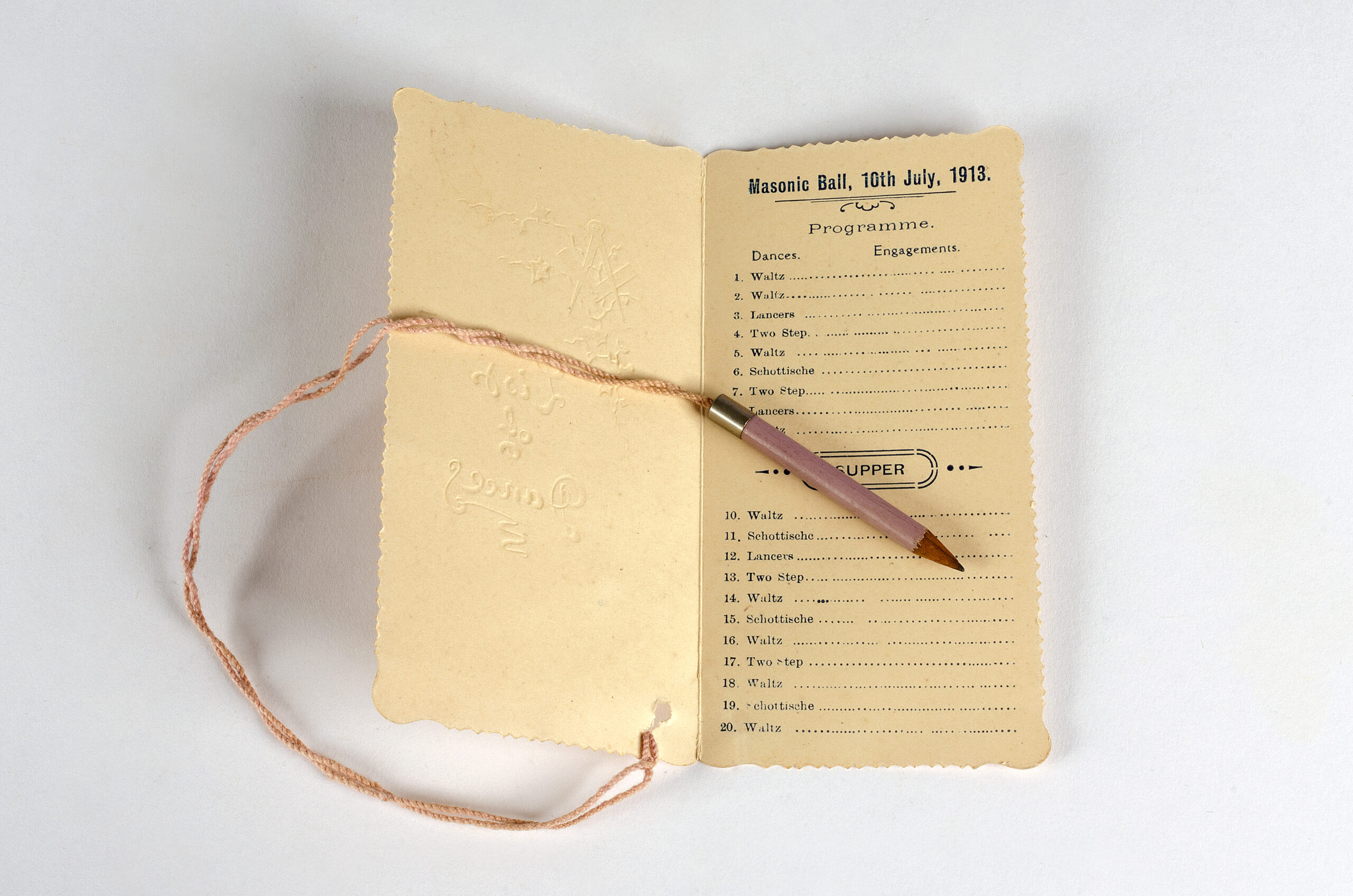Old Time, Good Time
Mastering the Masonic Ball
In regional towns in the early twentieth century, balls and dances were opportunities for the community to gather, be festive, and spark new friendships or romances.
Days afterwards, an article in the newspaper would usually appear which detailed the night, including the decorations, the catering, and the attendees – whose names and attire were carefully listed in case any dance partners needed to identify their missed connection.
But an element that was often left to a reader’s imagination was the dancing itself. Dance cards, like this one for a Masonic Ball in 1913 kept at Narrabri Old Gaol Heritage Museum, are useful clues for piecing together what a night of dancing may have involved over a century ago.
Typically, these events enlisted the help of a well-respected community figure who was knowledgeable about dance to act as the Master of Ceremonies (MC) and lead proceedings. A good MC would program and announce dances with a mixture of time signatures and difficulties to ensure even the most anxious wallflowers could participate. With everyone involved, the MC or an experienced helper would then act as a ‘caller’ and keep both the musicians and dancers in time and in step.
The dances featured on this card (Waltz, Lancers, Two Step, and Schottische) indicate a programmer with a more classic sensibility. All considered ‘Old Time dances,’ it would be easy to dismiss the event as overly traditional seeing as ‘New Vogue dances’ were becoming popular at the time and would dominate the coming decades. However, that misses an important point.
Social dances, rather than competitive or formal forms of dance, prioritised enjoyment and connection over technique. So, even though the novelty of newer styles from far-flung places might lead to a good time, the benefit of traditional dances (especially in regional settings) was their familiarity.
With more partygoers able to easily join in, teach those less familiar, and chat throughout, you had better odds of a night worth remembering.






